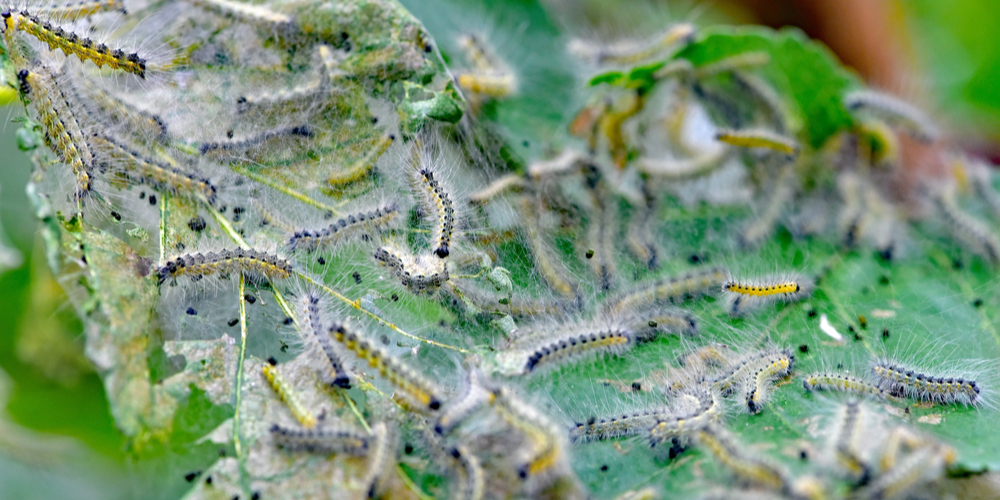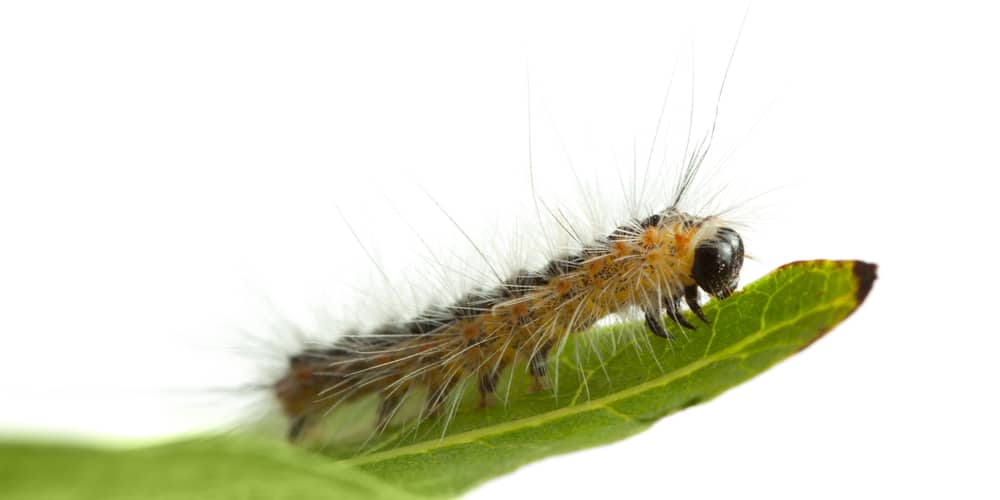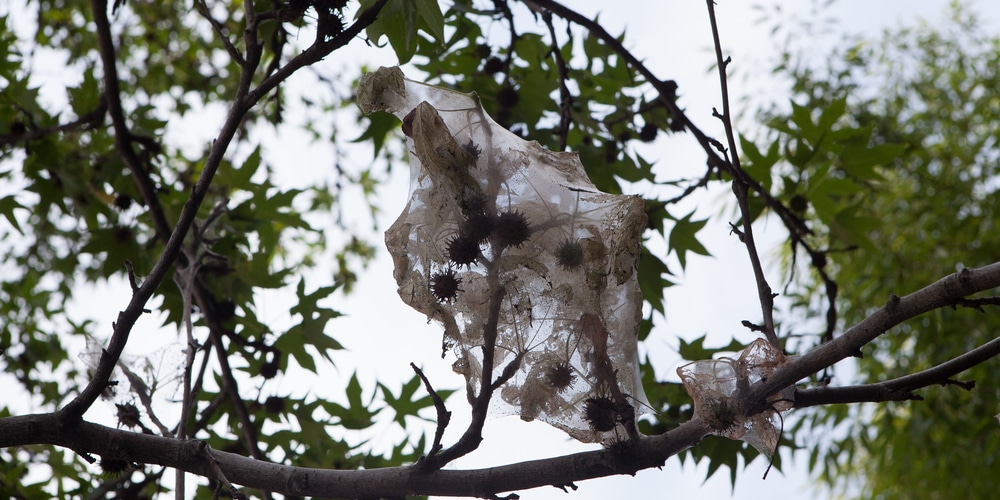Texas is home to beautiful wildlife and plants, with sceneries that range from beaches and deserts to forests and lakes. Along with these natural wonders come some not-so-welcome critters, like the fall webworm.
Fall webworms, or Texas webworms, are small caterpillars that can be found in trees and shrubs all over Texas. If you’re a local, you’ve probably spotted these guys before, as they’re hard to miss with their tell-tale webs.
Although they’re not dangerous to humans, these pests can wreak havoc on plants and trees. Keep reading to learn more about Texas webworms, including their appearance, diet, and how to get rid of them.
Texas Webworms: Appearance and Characteristics
Fall webworms get their name from the time of year when they’re most active, which is late summer to early fall.
As their name suggests, these caterpillars spin webs around leaves and branches of trees and shrubs. The webs protect the caterpillars from predators and the elements while they feed.
These caterpillars are small, ranging in size from ½ to an inch long. They’re white or yellow light-colored, with black spots dotting their bodies. Perhaps the most distinctive feature of Texas webworms is their webbing, which can completely cover the leaves of a plant.
With yellowish-brown heads and black spots, adult fall webworms look similar to their caterpillar counterparts. Adult females lay eggs on the undersides of leaves in late spring or early summer.
Once the eggs hatch, the caterpillars begin to spin their webs and start feeding. They continue to grow and molt until they reach maturity, at which point they mate and lay eggs to start the cycle all over again.
Fall Webworms: Diet and Behavior
Fall webworms are notorious for being voracious eaters. These caterpillars are generalists when it comes to diet and will munch on just about any type of tree or shrub leaves they can find. Whether it’s an oak, pecan, hickory, maple, or elm, these critters aren’t picky. This can be a problem for gardeners and homeowners alike, as webworms can quickly defoliate a plant.
This wide range of preferred foods makes fall webworms a tricky pest to control. They’re also active for several months out of the year, from late summer to early fall, which gives them plenty of time to chow down. In Texas, they appear as early as April and can be found as late as November.
To make matters worse, fall webworms are social creatures that live and feed in groups. A single tree can be home to hundreds of these caterpillars, which can strip it of its leaves in a matter of days.
In some cases, defoliation caused by fall webworms can be so severe that it kills the plant. This is more likely to happen with young or stressed plants, but it’s still something to be aware of.
Fall webworms spin webs around leaves and branches to protect themselves while feeding. This behavior protects them from predators and keeps them from getting blown away by the wind. It’s also a way for them to share food with other colony members.
When Texas webworms are ready to pupate, they leave their webs and spin cocoons on the ground or tree bark. Once they emerge as adults, they mate, and the cycle starts all over again.
Fall Webworm Infestations: How to Get Rid of Them
Unfortunately, there’s no surefire way to get rid of fall webworms. These caterpillars are difficult to control because of their wide range of preferred foods and the fact that they’re active for several months out of the year.
The best way to prevent an infestation is to keep an eye out for these pests and take action as soon as you see them.
Here are some things you can do to check:
Identify Affected Plants
The first step is to identify which plants are affected. You’ll notice webworms on the leaves of trees and shrubs. They’re most likely to be found on pecans, hickories, oaks, maples, and elms, but they can infest just about any type of plant.
Check for Webbing
Once you’ve identified which plants are affected, check for webbing. This is a sure sign that fall webworms are present.
Look for Eggs
Fall webworm eggs are small and oval-shaped. They’re usually yellow, but they can also be green or brown. You’ll find them on the undersides of leaves. If you see this, it’s a clear indication that fall webworms are present, and you need to take action.
Remove Caterpillars and Webs
The best way to get rid of fall webworms is to remove them by hand. This can be time-consuming, but it’s the most effective way to prevent further damage to your plants. Use gloves or a tool (like a putty knife) to remove the caterpillars and their webs.
You can also prune heavily infested branches and dispose of them in the trash. This won’t eliminate all the webworms, but it will help reduce the population.
Apply Pesticides
If you have a severe infestation, you may need to use pesticides. There are a few different types of pesticides that are effective against fall webworms. Alternatively, you may want to get in touch with a pest control company to handle the infestation for you.
Texas Webworms: Final Thoughts
Fall webworms are truly a nuisance. Despite their small size, these caterpillars can cause a lot of damage to your plants. If you suspect that you have an infestation, take action immediately. The sooner you get rid of the webworms, the better.
Related article: Can Spider Mites Live Without Plants?


